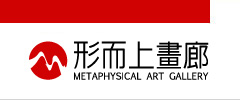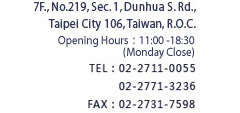| 1921 |
Born in Beijing |
| 1937 |
The Lu-gou Bridge Battle
soon exploded. Wang Pan-youn, who had been
in his hometown in Jiang-su. |
| 1944 |
Bachelor of Architecture
Engineering, National Central University,
Chungking. |
| 1946 |
After passing through
many places, Wang arrived at Zhen-jiang and
started to teach at the Dan-Yang Middle School. |
| 1947 |
Went to Shanghai. But
as the civil war continued to rage, he could
not find a place to live and temporarily had
to stay in a refugee camp. |
| 1949 |
Master of Science in Architecture,
University of Elinois. |
| 1951 |
Worked with Gropius
and the Architects Collaborative (TAC), Cambridge,
Massachusetts. |
| 1952 |
M.I.T. Instructor of Architectural
Design. |
| 1954 |
Designed Tunghai
University Master Plan (Associate Architect
I.M.Pei, C.K.Chang) |
| 1960 |
Appointed Chairman, Architecture
Department, Tunghai University, Taiwan. |
| 1980 |
Appointed Dean of The
College of Engineering, Tunghai University,
Taiwan. |
| 2007 |
June 5, died at the age of 86 in San Francisco. |
| |
|
| Solo Exhibitions
- |
| 2003 |
Painting and Architecture
of Chen, Ci-Kwan in Taipei Fine Arts Museum. |
| 2000 |
Solo Exhibition, "A
Retrospective: Chen Chi-kwan at the Age of
Eighty," Beijing and Shanghai. |
| 1999 |
Solo Exhibition, Ashmolean
Museum, oxford University. |
| 1998 |
Solo Exhibition, Art Center
of National Central University. |
| 1996 |
Solo Exhibition, Museum
fuer Ostasiatische Museum, Berlin. |
| 1991 |
Solo Exhibition, Rietberg
Museum Zurich, Switzerland.
"Chen Chi-kwan Retrospective,"Taipei
Fine Arts Museum. |
| 1984 |
Solo Exhibition, Honolulu
Academy of Arts Center. |
| 1980 |
Solo Exhibition, National
Museum of History, Taipei. |
| 1977 |
Solo Exhibition ,"Inner
Eye of Chen Chi-kwan," Art Gallery of
Greater Victoria, B.C.Canada. |
| 1974 |
Solo Exhibition, Hong
Kong Art Center. |
| 1969 |
Solo Exhibition, San Francisco
Redevelopment Agency. |
| 1964 |
Solo Exhibition, Mi Chou
Gallery, New York |
| 1963 |
Solo Exhibition, Mi Chou
Gallery, New York. |
| 1962 |
Solo Exhibition, "A
Decade in Retrospect," The University
of Michigan Museum of Art. |
| 1961 |
Solo Exhibition, Mi Chou
Gallery, New York / Solo Exhibition, Design
Research, BostonSolo Exhibition, Columbia
University, New York. |
| 1955 |
Solo Exhibition, Margaret
Brown Gallery, Boston / Solo Exhibition, Weyhe
Gallery, NewYork / Solo Exhibition, The Lamont
Gallery, Phillips Exeter Academy. |
| 1954 |
Solo Exhibition, Margaret
Brown Gallery, Boston / Solo Exhibition, Weyhe
Gallery, New York. |
| 1952 |
Solo Exhibition, M.I.T.
Chmnridge, Massachusetts / Solo Exhibition,
Margaret Brown Gallery, Boston |
| |
|
| Group Exhibitions
- |
| 1994 |
Group Exhibition "
Chinese Modern Ink Painting, "Taiwan
Museum of Arts.
Group Exhibition, Inaugural Exhibition of
Kaohsiung Museum of Fine Arts. |
| 1992 |
The Second " International
Ink Painting Exhibition," Shen Zhen. |
| 1989 |
Group Exhibition, Lo Shan
Tang Collection, Hong Kong and Taipei. |
| 1988 |
Group Exhibition"
International Ink Painting in Beijing"
sponsored by Chinese Fine Artists Association
and Chinese Traditional Painting Research
Institute. Group Exhibition, Lo Shan Tang
Collection, Hong Kong and Taipei. |
| 1987 |
Group Exhibition " The New Look of
Chinese Modern Art," National Museum
of History, Taipei. |
| 1986 |
Group Exhibition"
Contemporary Chinese Painting, : sponsored
by Chinese University of Hong Kong and Ming
Pao/ Group Exhibition " Abstract Ink
Painting," Taipei Fine Arts Museum. |
| 1983 |
Group Exhibition "Some
Recent Developments in Twentieth Century Chinese
Painting: A Personal View" .organized
by Hugh Moss for Hong Kong Arts Festival,
The Hong Kong Art Centre. |
| 1981 |
Group Exhibition sponsored
by Museum of history, Taipei and Museum Cernuschi,Paris |
| 1966 |
Traveling Exhibition "
The New Chinese Landscape" sponsored
by American Federation of Arts, New York. |
| 1960 |
Group Exhibition "100
Years of American Watercolor," Guild
Hall,East Hampton, New York. |
| 1958 |
"Crosscurrents,"
a show sponsored ed by Time,Inc. |
| 1957 |
Group Exhibition at Boston
University, Brandeis University. |
| |
|
| Awards
- |
| 2004 |
Awarded the Eighth National
Award for Arts of Taipei. |
| 1995 |
Awarded Outstanding Architect
by R.O.C Government. |
| 1979 |
Complete Chang Hwa Bank
Building (Associate architect Haigo Shan) |
| 1967 |
Listed among the top ten
of Taiwan architects. |
| 1956 |
First prize, Youth Center
Design Competition sponsored by Architectural
Forum. |
| 1949 |
First prize, City Hall
Design Competition of Danville, lllinois. |







